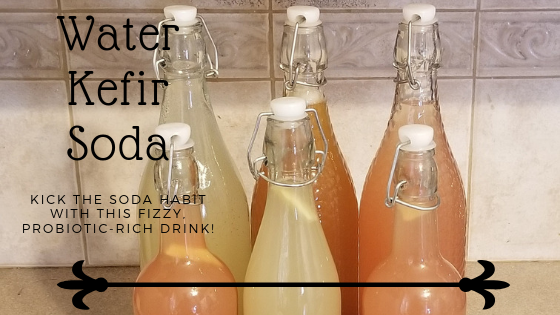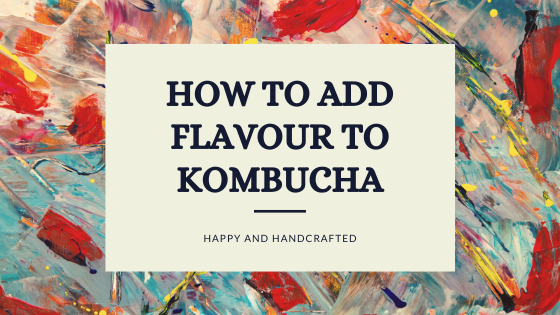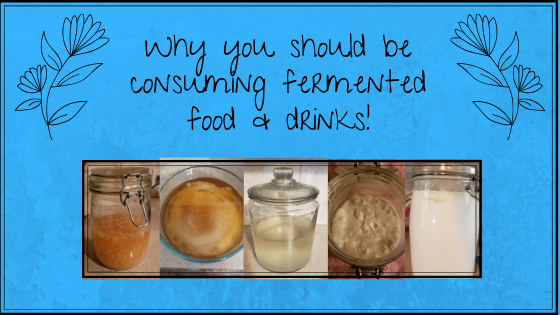
Water Kefir Soda
~ A healthy, probiotic-rich way to kick the sugary soda habit!
If you haven’t heard of water kefir yet, you’re not alone. It seems like it’s a lesser-known way of fermenting. It’s a lot milder than some of the other fermented drinks. Some have a tart vinegary taste that can be off-putting to some. Water kefir has a slightly sweet and slightly sour taste. It is perfect if you’re new to fermenting or you just can’t handle the taste of some of the other more popular fermented drinks.
Disclaimer – This post contains affiliate links. That means if you purchase something through an ad I will receive a small commission at no extra cost to you. Thank you for your support
Water kefir is also known as Japanese water crystals or Tibicos. It is thought to have originated in the late 1800s.
This type of kefir is basically fermented sugar water. A type of grain-like culture of bacteria and yeast are used to make this. They feed off the sugar in the water making the finished product only mildly sweet and effervescent.
The grains can be purchased or gifted through a friend. There may be someone close to you who wouldn’t mind sharing or you can buy online. Which is what I did.
When I got my grains they came dehydrated, so I had to re-hydrate them. It wasn’t as complicated as I thought it would be; as long as you follow the directions and give them the sugar and minerals they need, they respond quite quickly.
The mixture is then typically fermented for 24–48 hours, producing a probiotic beverage rich in beneficial bacteria, minerals and enzymes. Water kefir is known to increase immunity, aid in healing leaky gut and is said to slow cancer cell growth. It is also dairy-free and vegan. So there are plenty of reasons to drink it plus it tastes so good!
Disclaimer – I am not a doctor. This post is a result of my research and my own trial and error. This is what works for me and what I believe. Please see a health care professional before starting a new health regimen.
Since I have started consuming fermented food and drinks every day, I have noticed that I have more energy, I don’t need to sleep all the time and my psoriasis has started to clear some. By no means am I saying these results are typical! All I’m saying is that this is what I have noticed in myself.
~Pin it for later~
What you’ll need ~
It’s a good idea to only use glass or plastic when dealing with grains. Metals other than food-grade stainless steel can react with the grains negatively. I try to not use any metal at all just to be safe.
How to re-hydrated your grains ~
If you get your grains hydrated you can start right away. If you get your grains dehydrated there is a bit of a process to get them hydrated. It’s not complicated or hard; it just takes a bit of time. Most of the time they will come with detailed instructions, if not just follow this.

This is what the water kefir grains look like when they come dehydrated. 
This is what they look like once they’ve been re-hydrated.
In a large glass jar pour 2 cups of hot water and dissolve 4 tablespoons of sugar (I like organic cane sugar) Once the sugar is dissolved add 2 cups of cold water.
The water needs to be quite cool before you add the grains. (20 – 29 C/68 – 85 F) Put the grains in the jar, put a cloth or paper towel over the top and secure it with a rubber band or string and let it sit for 72 hours.
After 72 hours strain it, discard the liquid and repeat the process this time for 48 hours. At this point, you might have to repeat again or they may be ready. Taste the water and see it has a slight tang and not very sweet. If you’ve never tasted water kefir before it might be a good idea to taste the water before and after to compare the taste.

You won’t notice a lot of difference between when it’s ready and when it’s not. As you can see in the photo there are a few bubbles and a couple of grains are floating at the top but this isn’t always the case and it doesn’t mean that anything is wrong or that it’s not ready. This is why taste and smell are important here.
Keeping the process going ~
The recipe is going to remain the same for the most part. Once the grains start multiplying you’ll either have to take some out or adjust the ratio. It’s a good idea to measure your grains every so often to see if they are multiplying. Currently, I use 6 cups water to 6 tbsp sugar and about 1/2 cup of grains as that amount is enough for me at the moment.
Once you’re ready to start drinking the kefir, you can do one of 2 things. You can drink it as is which is fine but it won’t have as much flavour or fizz as if you do a second ferment. The second ferment is where you can add flavours. You can use juice, nectar, fruit, herbs – imagination is really the limit. For this, I suggest quality flip-top bottles, something that’s meant to hold liquids under pressure.
Simply put the fruit or juice in the bottle add the strained kefir, close the bottle and leave it on the counter for a couple of days. Make sure to gently twist the bottle to get the good stuff off the bottom and release the pressure a couple of times a day.
Take care not to leave too much headspace in the bottles as that can create too much pressure and the bottle could explode (worst-case scenario). Fill the bottles up to about the middle of the neck to avoid this.

Some added information ~
A little more about the sugar, almost any type of sugar is fine. Cane sugar, brown sugar, turbinado sugar, molasses and so on. Sweeteners are a definite no as is honey. Water kefir needs sugar to feed on and sweeteners have none of that. Honey has antibacterial properties which are counterproductive to getting good bacterias as it will fight against them.
You can put it in the fridge once you get the flavour you like and that will stop the fermentation process. It does lose some fizz in the fridge. This isn’t a big deal really because all the benefits are still there. If you’d like to get the fizz back take it out about an hour before you drink it and it will come back.
There is some debate about added minerals and fruits. Some say to add minerals, eggshells, Himalayan salt, a date etc. Personally, I don’t and have had fine results. I tried using a date once. It came apart and got mixed in with the grains and wasn’t very visually appealing. The water where I live is hard water and there are enough minerals in that. Sometimes I use spring water also but if your tap water is safe to drink it should be fine.
If you feel like it’s lacking something or not fermenting properly try adding a dash of Himalayan salt or half a clean eggshell. It is possible to overdo the minerals though and then your grains will likely become mushy and maybe die; best to keep it simple in my opinion.
Pretty amazing stuff, right?
That’s all for now. Let me know what your favourite fermented food or drink is and if you have any awesome, must-try recipes let me know! I’d love to try them!






-
Tagged fermented drinks,fermented tea,flavouring kombucha,homemade kombucha,homemade soda